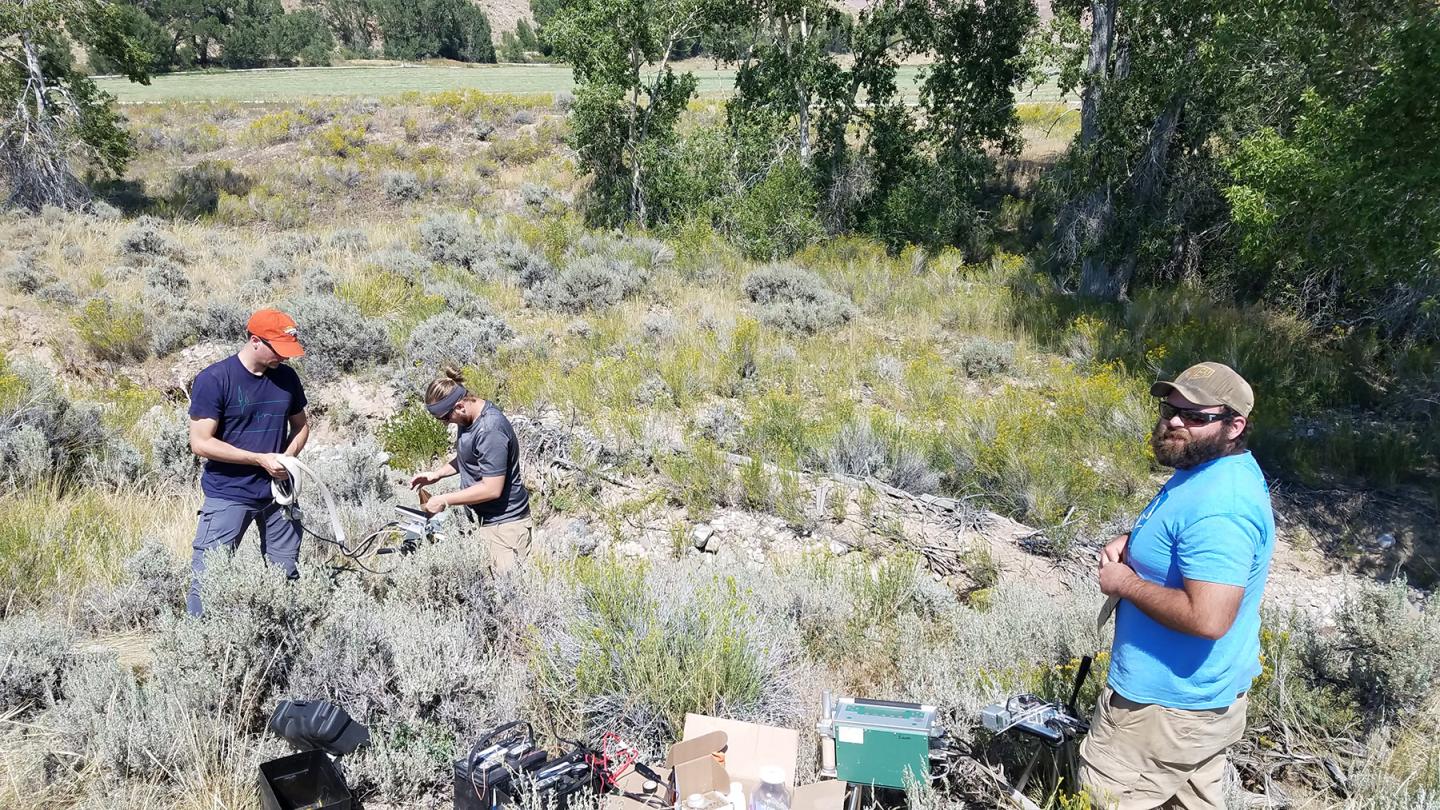
Credit: Krag Beverly
The total solar eclipse’s swath across Wyoming and the United States in August 2017 provided an opportunity for scientists to study a variety of celestial and earthly phenomena, from learning more about the sun’s corona to the behavior of animals and plants.
University of Wyoming botany and hydrology doctoral student Daniel Beverly used the eclipse to examine the impact of the moon’s shadow on an iconic plant species of Wyoming and the Intermountain West: big sagebrush. He found that the short period of darkness caused a significant reduction in photosynthesis and transpiration in the desert shrub, but not quite to the levels of nighttime.
Additionally, the circadian rhythm — the response to the internal clock common to nearly all organisms including humans — was interrupted by the sudden changes in sunlight beyond typical cloud cover.
“The reduced temperature and lack of sunshine shocked the circadian clock of big sagebrush, triggering a response far beyond what happens when clouds block sunlight,” says Beverly, whose research appears today (Thursday) in the journal Scientific Reports. “However, the duration of eclipse totality was not sufficient to bring the plants completely to their nighttime state.”
Scientists have extensively studied the response of animals to total solar eclipses. Those findings have been mixed, with birds, bees and spiders behaving just as they do at dusk, while no behavioral change was observed in animals such as dairy cattle and captive chimpanzees. On the other hand, very little is known about plant responses to eclipses, either on the small scale or across broad ecosystems. Beverly’s study — which involved fellow UW scientists in the Department of Botany, the Program in Ecology and the Wyoming Geographic Information Science Center — offers some of the most detailed information about individual plant response and potential broad ecosystem impacts ever reported.
Beverly’s fieldwork took place at a site about 50 miles southeast of Yellowstone National Park, which was within the eclipse’s path of totality Aug. 21, 2017. That area is dominated by mountain big sagebrush. The site experienced 2 minutes, 18 seconds of eclipse totality, with the total duration of partial and total solar eclipse reaching 2 hours, 45 minutes, 36 seconds.
Devices deployed during the study included a micrometeorological tower to record the sun’s radiation and changes in temperature; an infrared gas analyzer to measure photosynthesis; and fluorometers to measure leaf response to changing light conditions. During the short duration of near darkness, they found significant reductions in transpiration — evaporation of water from sagebrush leaves — as well as photosynthesis, the transformation of light energy into chemical energy that converts carbon dioxide and water into sugar and oxygen.
In addition to documenting the response of specific sagebrush plants to the eclipse, Beverly and his colleagues used those results to estimate the eclipse’s impact on sagebrush-dominated areas within the path of totality. They calculated a 14 percent reduction of carbon being converted in Western big sagebrush ecosystems that one day.
“Despite its relatively short duration, the eclipse caused a significant reduction in estimated daily carbon uptake for Aug. 21, 2017, in big sagebrush ecosystems,” Beverly says. “This information gives us a more comprehensive understanding of plant physiological responses to sudden changes in light, temperature and humidity that the internal clock fails to predict.”
###
Media Contact
Daniel Beverly
[email protected]
Original Source
http://www.
Related Journal Article
http://dx.





